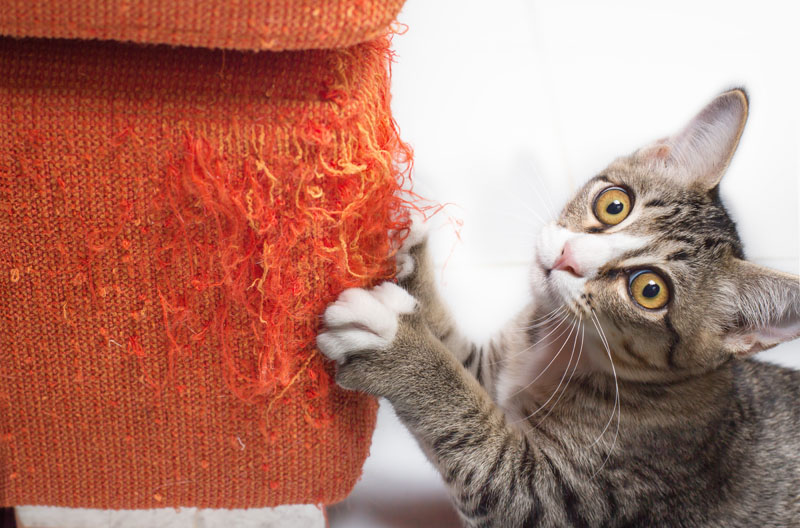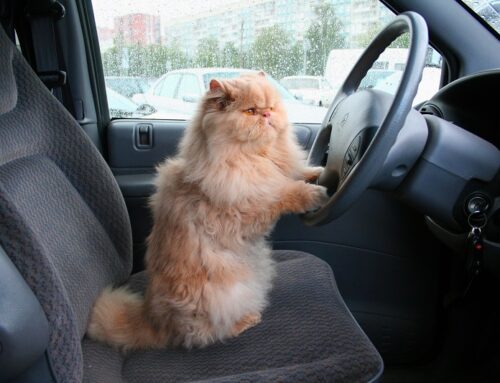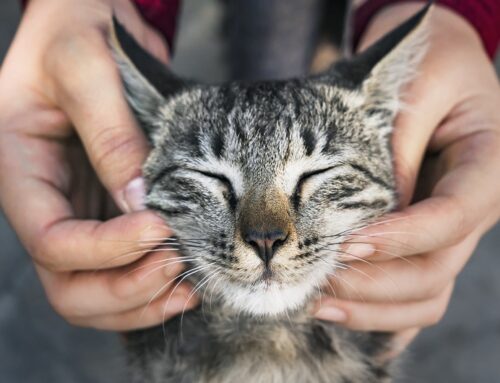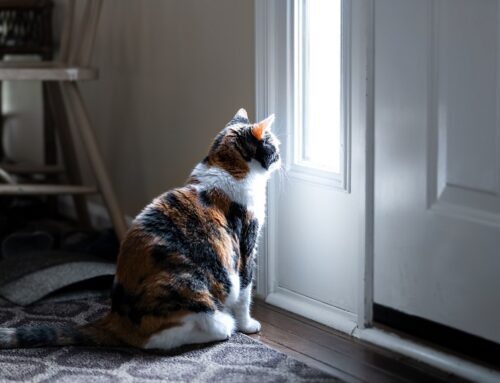In recent cat news, the American Association of Feline Practitioners has taken a strong stance against declawing. While declawing does seem to be on the way out, we still get several inquiries a week from people asking about declawing their cat or kitten. While we are happy to say that we DO NOT perform declaws at Cats On Broadway, this is not the norm at many other clinics.
To put it bluntly: there is no medical reason to remove healthy claws from any cat. In fact, it can actually harm the relationship you have with your cat and worsen behavioral issues. We cannot emphasize this enough!
Most people request declawing because their cat or kitten is destroying their carpet or furniture. When questioned about the issue, we often find that these people have not given their cat any other options for scratching. However, when they purchase an appropriate scratching post for their feline friend, the problem disappears. (For more information on cat scratching behavior, see our July 2015 newsletter.)
For a few cat owners, they request declawing because they are being scratched by their cat. This is frequently an issue of teaching the kitten or cat to play appropriately with people. It is the same as teaching a puppy not to chew on hands; kittens and cats need to learn not to use teeth or claws harshly when playing with people. Regular nail trims can help mitigate cat scratch injuries, too. (Now, if your cat is aggressive or attacking people, this is a behavioral/medical issue, and your cat should be examined by a veterinarian. Declawing will NOT help the situation and may make it worse!)
Additionally, it is normal for kittens to want to climb up legs and furniture. This is perfectly reasonable when you see things from a kitten’s perspective: kittens are heavily dependent on their mother for the first 5 – 6 months of life, and we usually adopt kittens at 6 – 12 weeks old. These kittens are suddenly removed from their mom and are looking for comfort. They go from a family that is at ground-level to one that is typically 4 – 6 feet tall, and since they can’t jump well yet, the only way to get to eye-level is to climb. This behavior will disappear as the kitten grows and becomes more proficient at jumping up onto things.
Unfortunately, many people don’t realize what actually is involved with declawing a cat. When asked, most people think that declawing is an aggressive or permanent nail trim. In reality, the declaw procedure is an amputation of each toe at the last joint. The human equivalent would be amputating all of your fingers at the last knuckle. This would be both painful and disabling, and you would no longer be able to use your hands in the same way!
After amputation of their claws, cats can also develop long term pain from neuromas (a nerve growth that also causes “phantom limb” pain in humans). We have also seen some cats regrow small, abnormal nails from improperly performed declaw procedures. Despite some cat owners’ best intentions, the side-effects of declawing could cause a cat to become less social, more irritable, and avoidant of their litter box.
So, if you or anyone you know is thinking of declawing a cat, please think twice! Even if you are considering declawing as a last resort for any reason, call us for a consultation to research other options. Let’s keep our kitties and their owners as happy and healthy as possible together!








